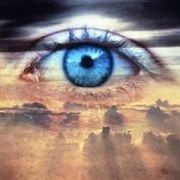
Psychohistory applies psychology to the experience of groups. It sheds light on the psychological motivations behind historical events.
The origin of the term is often attributed to Isaac Asimov, a Russian Jew, biochemist and science fiction writer best known for his Foundation series. Asimov had finished reading The History of the Decline and Fall of the Roman Empire and hypothesized a future social science, psychohistory, that used mathematics to predict the actions of large groups of people.
The concept was also inspired by Asimov's study of the kinetic theory of gases where the action of an individual molecule is hard to predict, but you can calculate on average what trillions and quadrillions of molecules will do.
“Psychohistory” in Asimov's sense of the word does not exist except as a sci-fi fantasy about mathematician Hari Seldon who predicts the fall of the interstellar Galactic Empire in 12,000 CE and attempts to save it. But the psychodynamic model of interpreting large groups is alive and well.
Freud describes processes of the mind as flows of psychological energy or what he called libido. He proposed that psychological energy was constant yet subject to changes such as repression and displacement. It could be put in other places and altered in form. Although not an Asmovian mathematical science, psychodynamics is the systematic study of these transformations and exchanges of psychic energy. How such changes occur within groups is one area of psychohistorical inquiry. Among other things, this branch of psychological science seeks to understand how collective fantasies are clues to unconscious thinking and behavior.
At the recent conference of the International Psychohistorical Association, Howard Stein gave the keynote address on Jewish memory. Stein, a psychoanalytic anthropologist, said memory becomes a story, a “master narrative” that, although not exclusive, is a common pattern in Jewish identity. He noted the distinction between “historical truth,” what actually happened such as the very real and tragic fate of Jews during WWII (when Asimov was writing his first Foundation stories), and “narrative truth” -- how something becomes a story. In remembering events, particularly events of shared trauma, groups sometimes create myths around their experiences. This is what Stein calls “retrospective mythologyzation.”
One example is the condensation of Jewish enemies since the Exodus into the figure of Amalek. Amalek was reputed founder of the Amalekites, a tribe that attacked the Hebrews in the Sinai Desert as they escaped from slavery to the Promised Land. (See Biblical books of Genesis, Exodus, Deuteronomy, Judges, Samuel and Chronicles.) The figure of Amalek reappears throughout Jewish history: in the Christian Crusades, as Hitler, the British when blocking the entrance to Palestine, and most recently as Yasser Arafat. Amalekites, an actual people, become a subhuman abstraction, an "It," sometimes referred to as “cavemen” or “lickers of blood.” This marks a psychological change, the shift from history to myth, which is often embedded in the experience of group trauma. The historical experiences of actual persecution merges with the fantasy a demonized figure.
The building of the two Holy Temples in Jerusalem represents the historical events of which Jews are most proud, their collective glories. There are countless references in Jewish liturgy for the temples rebuilding.

The Destruction of the Temple of Jerusalem, Francesco Hayez, Italian,1867
One of the central traumas of the Jewish experience is their destruction on Tisha B’Av. The annual fast on this day commemorates this loss and other Jewish tragedies. In Judaism this is called the “saddest day in Jewish history”.
Stein suggests Tisha B’Av “condenses (as in a dream) Jewish tragic history into a continuum through the present.” The inability to mourn, common among large groups, can perpetuate a vicious cycle of traumatic reoccurrence. In the ritual practice of observing Tisha B’Av, one reads the Book of Lamentations and is encouraged to personally relive the exile from Jerusalem.
This psychological vulnerability, some claim, becomes exploited economically and politically by America Jewish organizations that fuel "Israel's Siege Mentality" (The Economist 2010: 13) and by what Norman Finkelstein calls the "Holocaust Industry."
__________________
follow me: http://www.twitter.com/mollycastelloe


